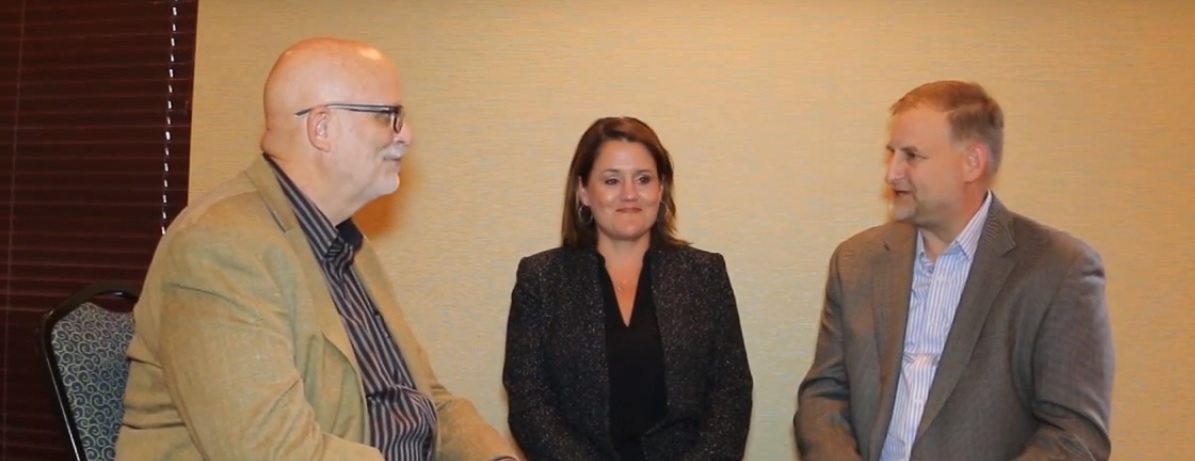What makes this community so successful?
By Susan Saldibar
There are plenty of small towns in Iowa. Many of them have virtually no senior housing. That’s because most operators avoid them. For Cedar Rapids-based Senior Housing Management, however, these small towns are their “sweet spots”, ripe for senior living communities. Senior Housing operates 26 small, independent/assisted living and memory care communities throughout Iowa, a number they expect to rise to about 30 by the end of the year. So they’re certainly doing something right.
During a keynote speaking engagement at Iowa Senior Living Association Annual Conference in Cedar Rapids, Steve Moran had lunch with the Senior Housing team, chatting with Allen Phillips, President, and Allison Law, COO, about their communities and what makes them so successful. Always interested in sharing stories of people doing cool things, Steve got Allen and Allison to sit down for a “Conversations” podcast. (Note that although the podcast has taken a different direction, we wanted to share this interview.)
Steve opened up by noting, as he has before, that some of the best operators seem to be those who operate under the radar. They’re just too busy doing amazing things and managing their 90+% occupancy rates. Senior Housing fits the bill perfectly with its network of small, 40-unit properties, and an average occupancy of 96% for their 2+-year- old communities. Pretty good track record in anyone’s book.
Taking care of their caregivers is a high priority. Here’s how they do it.
Steve asked Allen and Allison about their philosophy of care, which covers not just residents but also their employees. It starts with a strong educational reimbursement program: 25% reimbursement for those with Senior Housing for 1 year, 50% for 2 years, 75% for 3 years, and full reimbursement for those on board 4 or more years. Not bad for a caregiver on a tight budget trying to move up on the job.
“I think we have 7 people currently who get 100% reimbursement, including daycare and mileage to and from school. All are on nursing, management, or social work tracks,” Allen tells Steve.
They also provide 12 different healthcare coverage options. And, according to Allison, a couple have a very high deductible, so the community contribution basically takes care of them.
No wonder their employees love them.
“Dare to Dream” is for the residents, but the staff loves it too.
Steve had heard about Senior Housing’s “Dare to Dream” program, another great way of keeping residents, families, and staff engaged. According to Allison, every community manager has the cool task of making 12 resident “dreams come true” every year. “Dreams” range from hot air balloon rides to B53 bomber rides to attending weddings (or having the wedding come to them!).
“We had a lady in one of our small communities who was 90 and had never been to a movie, so we took her to a movie,” says Allen. “It’s just our way of showing what we’re all about and making dreams come true.” And at the end of the year, all the community managers get together to share their “Dreams” and vote on the best one. “And it gets pretty competitive!” Allen says.
EDs as “head coaches”. A baseball analogy that’s more than just a ballgame.
Allen likes to describe their management philosophy using a baseball analogy. The ED is the “head coach”. “So, they have their team of nurses and pitching coaches to help the nurses, but ultimately that head coach is responsible for the wins and losses and how we get there,” Allen explains.
“And they’re sitting up in the press box, making sure we’re selling the hot dogs and beer, and that everyone’s having a good time in the environment.” No joke. People love it and, according to Allen and Allison, it works!
Coaches who care about QA are driving longer lengths of stay.
And, apparently, these “coaches” get pretty competitive when Allen presents monthly results. Everyone wants to know not only about occupancy but where they are with the nursing and operations’ QA scores.
Steve noted that focus on quality after chatting with some of the Senior Housing nursing team at lunch. “It started with our original 3 managers who asked someone to ‘come in and QA us’ to prepare for when the state comes in,” says Allison. “So we now have a group of nurses who do QA assessments as well as training and support at each community, once per month. And it’s making a big difference,” she tells Steve. They’ve not only gone 23 months with zero regulatory insufficiencies, but it’s also driving longer lengths of stay for residents. And that is something they believe has increased by as much as 8 months in some communities!
Pretty impressive. And there’s much more, so you’ll want to check out the full podcast below:








